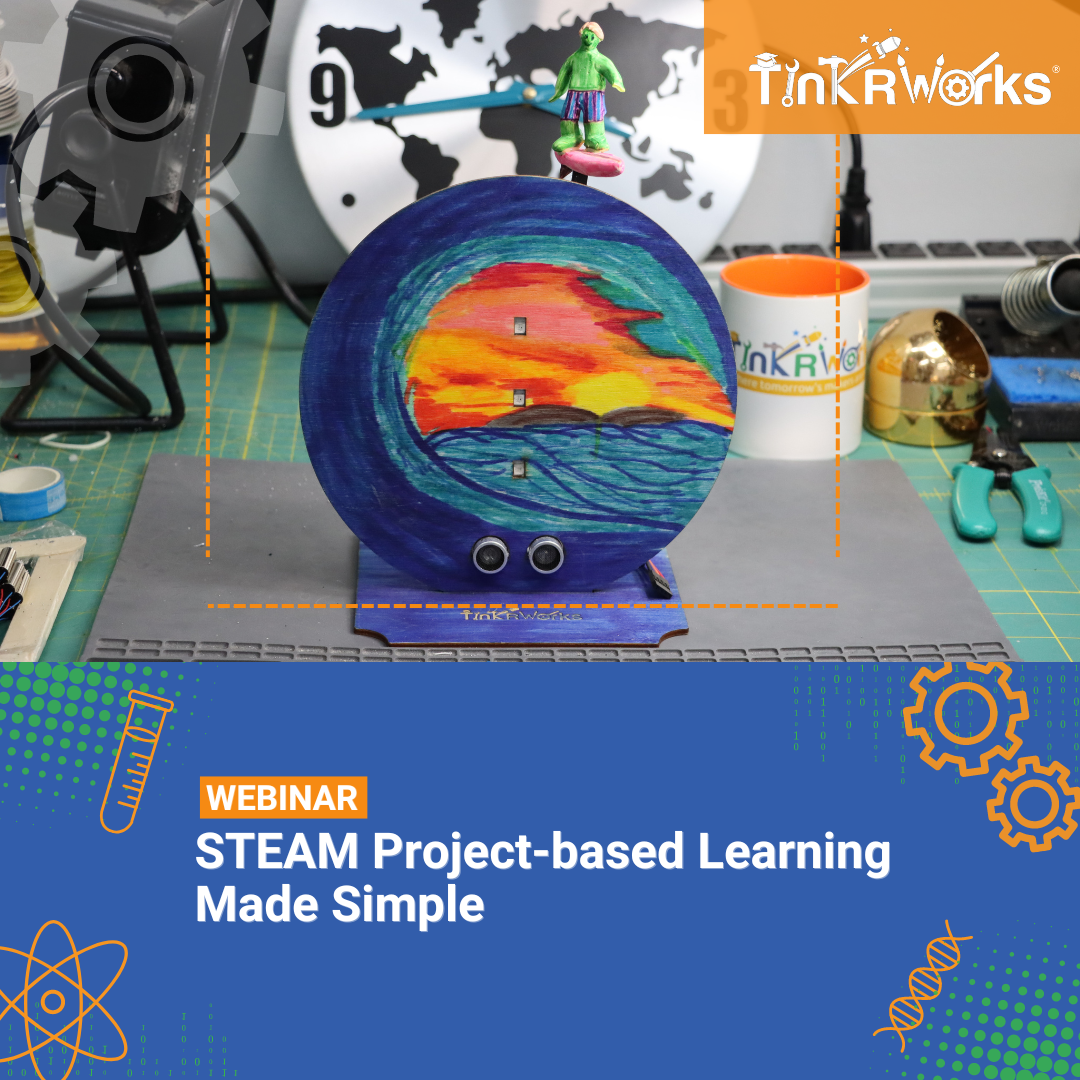Lesson Sampler
STEAM Project-based Learning Made Simple
What is Project-based Learning (PBL), and how is it transforming K-8 STEAM education? Join us as we delve into the case for STEAM Project-based Learning (PBL). Learn about the transformative potential of PBL through real-world applications in the STEM classroom.
Featured Speakers:
- Peter Cipkowski, Ed.D., delves into the research behind Project-based Learning (PBL) and its effect on science achievement and social/emotional learning
- Brian Sorich, Product Development Manager, walks through an Art Electric demo
- Matt Yena, TinkRworks School Partner, shares his experience teaching TinkRworks' projects in his middle school classroom
Recorded 4/16/2024

Watch Webinar
Pushes, Pulls & Pins Lesson Sampler
Grades K-2
Only TinkRworks provides all of the essential ingredients to ensure successful STEM implementation — including innovative curriculum, hands-on STEAM project kits, a user-friendly coding environment, and professional development.
Check out the Pushes, Pulls & Pins Lesson Sampler for preview of our STEAM curriculum (grades K-2).
Contents
- TinkRworks Curriculum Overview
- Curriculum Map
- Instructional Slides
- Programming Challenges
- Activity Guide
- Student Assessments
/Landing%20Page%20Assets/Project%20Lesson%20Samplers/Pushes%20Pulls%20Pins%20Sampler%20Cover.png?width=945&height=945&name=Pushes%20Pulls%20Pins%20Sampler%20Cover.png)
Peter Cipkowski, Ed.D., delves into the research behind Project-based Learning (PBL) and its effect on science achievement and social/emotional learning
Brian Sorich, Product Development Manager, walks
through an Art Electric demo
Matt Yena, TinkRworks School Partner, shares his experience teaching TinkRworks' projects in his middle school classroom
DOWNLOAD SAMPLER
Project Description
Pushes, Pulls & Pins | Grades K-2
Explore forces and programming with an electronic tabletop puck bowling game. Through experiments and kinetic exercises, students learn about the effect of push and pull forces, different materials, strength, speed, direction, and collision on the movement of objects. While exploring these concepts, students learn how to program their projects to use light sensors to determine how many pins have been knocked down. They flex their creative muscles by composing and coding music, as well as designing animations that indicate strikes and spares.